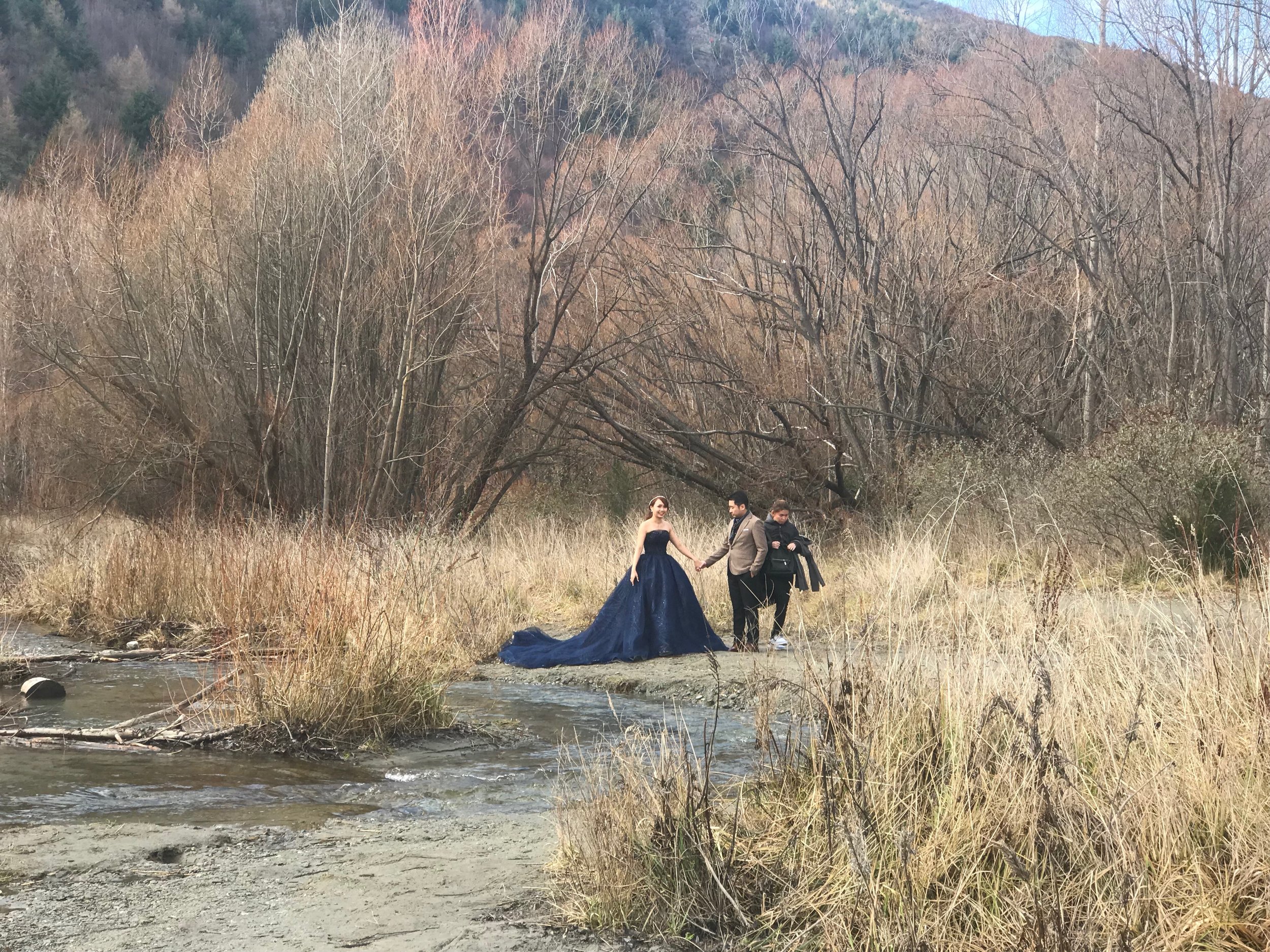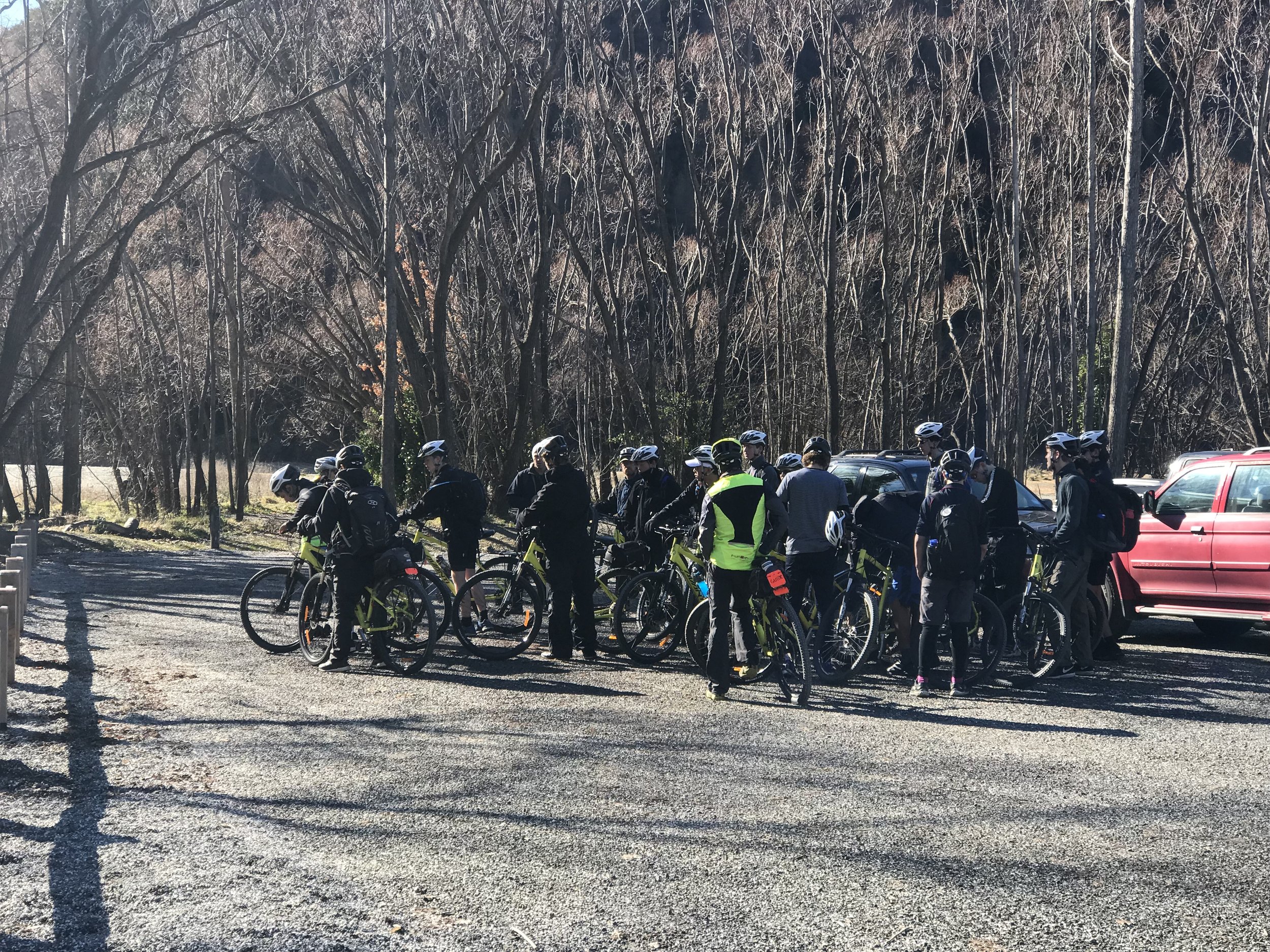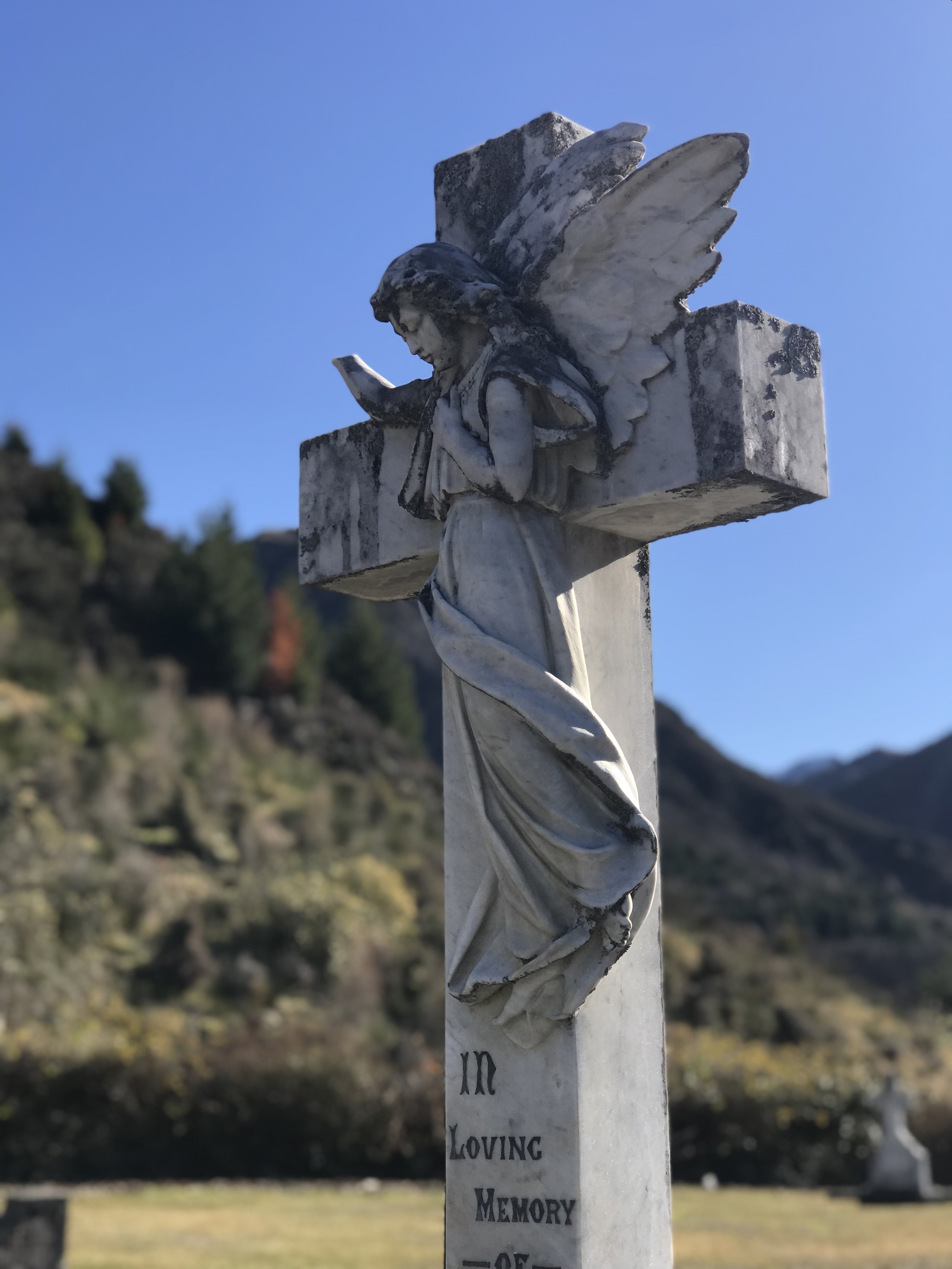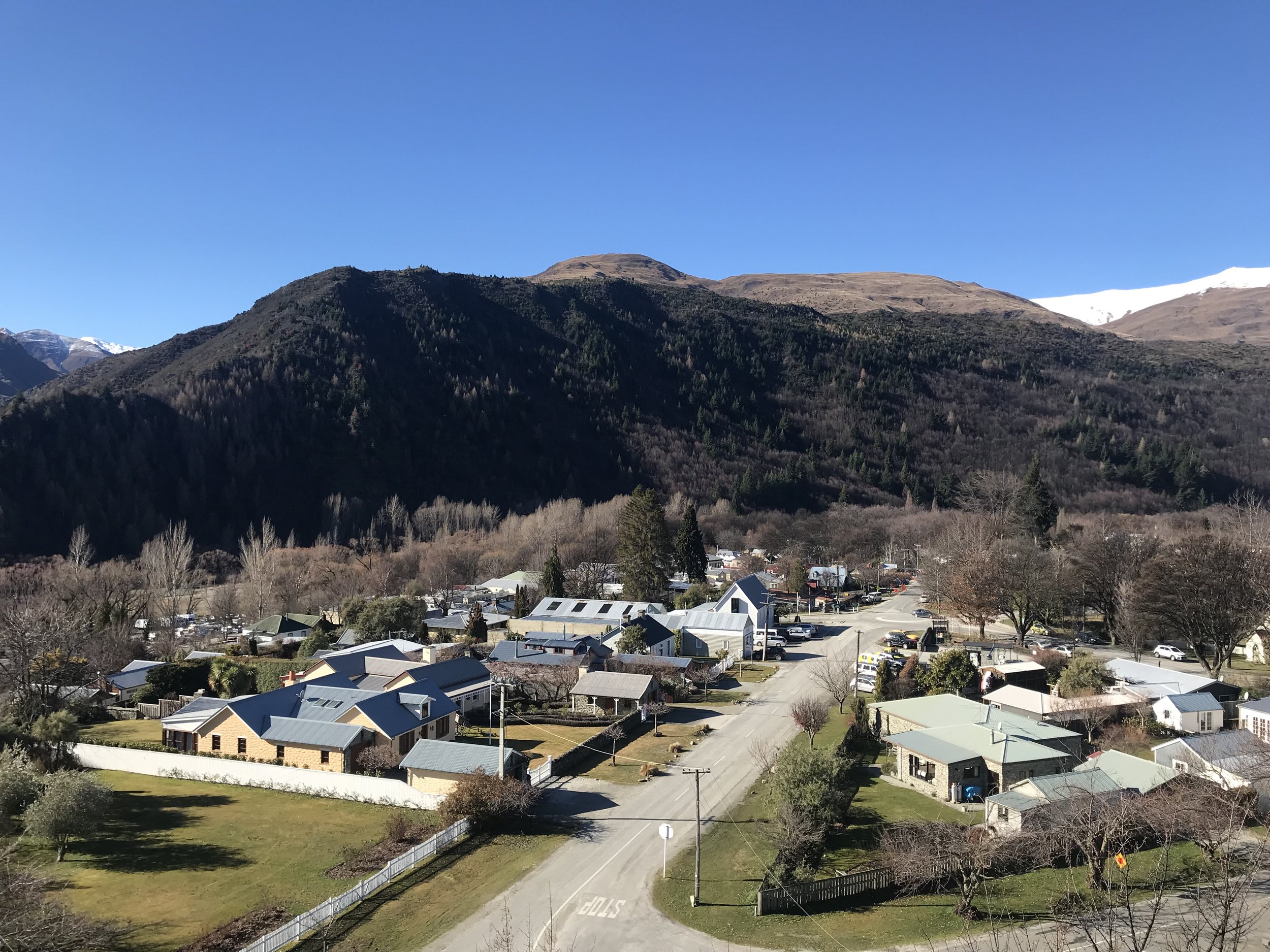Arrowtown: where the quest for gold lives on
Arrowtown’s goldmining heritage now draws thousands of visitors to the Central Otago town every year, but striking it rich in the tourism sector has taken decades of planning and hard work
Historic police hut, Arrowtown (image by Jacqui Gibson).
“Any luck?” my guide asks the young man standing in the river. “Nothing yet,” he replies cheerfully, looking up at our four-wheel-drive.
A backpacker perhaps, he’s panning for gold on the banks of the Arrow River, about a 40-minute hike upriver from Arrowtown village.
The water’s clear but frigid, thanks to the black shadow of Otago’s Crown Range hanging over this section of the river.
My guide assures him it won’t be long until the sun that we’ve enjoyed further inland on the river terrace at Macetown moves across the sky to warm him up too.
With a neighbourly wave we drive on, no doubt leaving the prospector hoping to endure the cold long enough to strike gold.
Gold was first discovered in Arrowtown by Jack Tewa or ‘Māori Jack’ in 1862, and within months the Arrowtown gold rush was on.
Miners in their thousands camped in canvas tents from the site of Jack’s initial find all the way upriver to a settlement called Twelve Mile Creek (later named Macetown after brothers John, Charles and Harry Mace, whose claims were among the first).
Coming from as far away as China, some found fortune while others boozed it away. More than likely they all endured the bone-chilling cold of the Arrow River. Many headed west to Australia, empty-handed, to chase the gold rush there.
In Arrowtown today the quest for gold lives on. As recently as 2006, a Southland man reportedly plucked a nugget worth $15,000 from the Arrow River.
These days the village welcomes 650,000 visitors a year, many of whom come to immerse themselves in Arrowtown’s goldmining heritage.
A 2016 report commissioned by the business community showed that visitors like the village’s quirky feel and heritage, its stunning location at the foot of the mountains, and its easy access to Queenstown and nearby golf courses, ski resorts, vineyards and cycling and hiking trails. And instead of just stopping by for a few hours, tourists now want to buck the trend and stay for a day or two.
On a walking tour of Arrowtown with Lakes District Museum & Gallery Director David Clarke, I learn that the village of around 2500 permanent residents has a unique story to tell.
“I think we’re offering something a bit different here and people like it,” says David, who has spent 29 years heading the museum. “We’re sharing our history and the story of who we are. We’re not trying to be a mini Queenstown, for example, we’re just trying to be ourselves.”
It’s Friday morning and David and I are standing on Arrowtown’s main road, Buckingham Street, outside the New Orleans Hotel, built in 1866 and my digs for the next few days. Inside, the fire’s roaring and the staff are preparing for the lunchtime crowd.
It’s the shoulder season, yet buses offload tourists by the dozens at the car park down by the river. A two-hour cycle tour taking cyclists along the Arrow River to the 80-metre Edgar suspension bridge is about to get underway.
The Remarkable Sweet Shop next door is already chock-full, with kids buying old-style gobstoppers and mums and dads sampling today’s free fudge offering, caramel nut slice. People are shopping across the road for Merino jumpers and jade trinkets, and breakfast is being served at busy eateries throughout the town (I’ve had mine earlier at Provisions, a café set in a renovated 1870s’ cottage).
And sure enough, there’s a family group of 11 trying their hands at gold panning in the outdoor panning trough at Dudley’s Cottage.
Arrowtown is quietly buzzing. For David, it’s a welcome sight, but the former district councillor and history scholar from Invercargill admits it’s been a battle to get to this point.
“It’s not always easy persuading people that our goldmining heritage and our built heritage are worth holding on to.”
As we walk to the Post and Telegraph Office, the site of Arrowtown’s original 1862 post office and one of the town’s first heritage buildings saved from demolition in 1995, David reflects on the early 1990s as a turning point in the town’s history. Like many small towns, Arrowtown faced pressure from developers to knock down the old buildings and build newer, bigger ones.
“We had to ask ourselves: do we flatten everything or keep and restore what’s here and take our mining heritage – and its buildings and artefacts – with us into the future?”
Thankfully, says David, the latter won out. The Queenstown Lakes District Council started by identifying Arrowtown’s heritage buildings for its District Plan, something David spearheaded with local landscape architect Philip Blakely.
Setting new zoning rules for Arrowtown’s commercial and residential historic areas and developing information to guide property owners followed.
A community-led planning advisory group to provide ongoing feedback to the council on heritage matters was set up and still runs today.
Heritage New Zealand was enlisted to assess the heritage status of more than 45 buildings throughout Arrowtown, including the Chinese village and Ah Lum’s Store, one of the few historic structures built by Chinese goldminers that are still standing in New Zealand.
And bit by bit, building by building, Arrowtown, under David’s guidance, set about raising the funds needed to upgrade many of the township’s heritage cottages, shops and civic buildings.
David and I walk past the three historic miners’ cottages on Buckingham Street – upgraded to the tune of $2.5 million in 2011 – on our way from the leafy Avenue precinct to Cardigan Street to check out the town’s latest heritage project.
Lakes District Museum & Gallery Director David Clarke outside Arrowtown’s historic goal (image by Jacqui Gibson).
Inside the stone building, David tells me he was recently invited to Greytown in Wairarapa to share Arrowtown’s example of heritage preservation and has previously advised planners in Coromandel and Akaroa.
“Not everyone agrees with the direction we’ve taken. And we certainly don’t get our way all the time. We know the lack of modern concrete footpaths and gutters really gets up people’s noses when the weather gets bad. But we’ve stuck to our guns and done as much as we can to put heritage front and centre in Arrowtown – and now other townships are keen to know more about how and why we’ve done that.”
Before ending our walking tour, we stop at St Patrick’s Catholic Church and Mary MacKillop’s cottage on Hereford Street. Both date back to the late 1800s. We also check out the Chinese settlement, built in 1869, on the edge of town.
Finally I make my way up to the hilltop cemetery on Durham Street for a bird’s-eye view of the town. It’s a spectacular outlook: a small-scale, picturesque village drenched in sunlight, flanked by a giant range of snow-capped mountains – a township still making its fortune from a gold of sorts, only these days it’s tourism gold.
IMMERSE YOURSELF IN HISTORIC ARROWTOWN
Arrowtown is part of the Tohu Whenua programme, a joint initiative between the Ministry for Culture and Heritage, DOC and Heritage New Zealand. Tohu Whenua aims to help visitors to Otago learn more about the region’s fascinating history.
Here’s a snapshot of just some of the heritage-focused things to do and where to go to eat, drink and stay in Arrowtown.
DO
Visit the Lakes District Museum & Gallery, recognised as one of New Zealand’s best small museums ($20 per family; $10 per adult; seniors $8).
Take a 90-minute guided walking tour of historic Arrowtown with the Lakes District Museum & Gallery ($20 per adult; $12 per child; children under six free).
Visit the historic gold mining town of Macetown, which is now a DOC reserve, on a half-day 4WD tour with Nomad Safaris ($295 per adult; $195 per child).
Learn how to pan for gold at Dudley’s Cottage, then try your luck in the Arrow River ($10 per lesson; $6 to hire a pan and shovel).
EAT & DRINK
Breakfast at Provisions of Arrowtown, a café at 65 Buckingham Street set in a restored cottage dating back to the 1870s, originally owned by George Henry Romans, a prominent businessman and former mayor.
Lunch at The Fork and Tap, a historic restaurant and bar built as the town’s original stone bank in 1875.
Dine at Stables Restaurant & Tavern, a restaurant set in the original stables built for businessman Bendix Hallenstein (of clothing retail chain Hallenstein Brothers).
STAY
The New Orleans Hotel on Buckingham Street was Arrowtown’s first hotel, built in 1866. Centrally located, it features accommodation and an upstairs and downstairs bar and restaurant, and is about to undergo a significant refurbishment. (Note, the author stayed in Arrowtown courtesy of the New Orleans Hotel).
This story was first published in Heritage New Zealand magazine.







